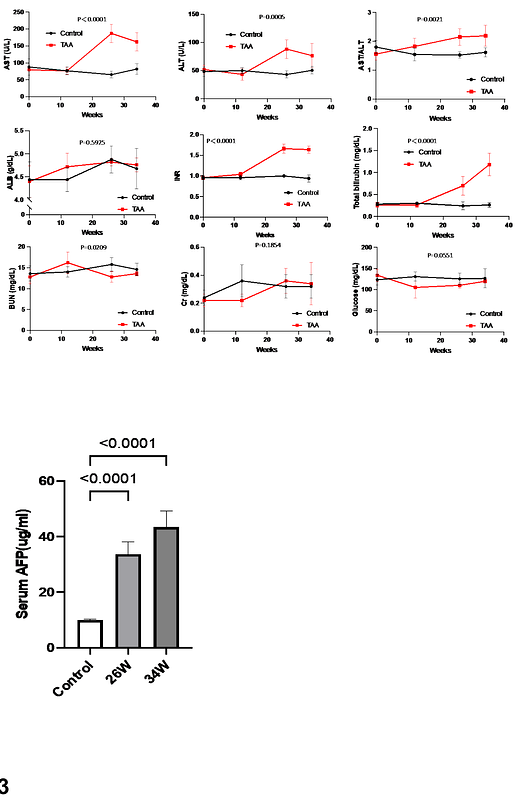A rat model of cirrhosis with well-differentiated hepatocellular carcinoma induced by thioacetamide

A rat model of cirrhosis with well-differentiated hepatocellular carcinoma induced by thioacetamide
Hu, Z.; Kurihara, T.; Sun, Y.; Cetin, Z.; Florentino, R. M.; Faccioli, L.; Liu, Z.; Yang, B.; Ostrowska, A.; Soto-Gutierrez, A.; Delgado, E.
AbstractHepatocellular carcinoma (HCC) is a leading cause of cancer-related deaths, and commonly associated with hepatic fibrosis or cirrhosis. This study aims to establish a rat model mimicking the progression from liver fibrosis to cirrhosis and subsequently to HCC using thioacetamide (TAA). We utilized male Lewis rats, treating them with intra-peritoneal injections of TAA. These rats received bi-weekly injections of either 200 mg/kg TAA or saline (as a control) over a period of 34 weeks. The development of cirrhosis and hepatocarcinogenesis was monitored through histopathological examinations, biochemical markers, and immunohistochemical analyses. Our results demonstrated that chronic TAA administration induced cirrhosis and well-differentiated HCC, characterized by increased fibrosis, altered liver architecture, and enhanced hepatocyte proliferation. Biochemical analyses revealed significant alterations in liver function markers, including elevated alpha-fetoprotein (AFP) levels, without affecting kidney function or causing significant weight loss or mortality in rats. This TAA-induced cirrhosis and HCC rat model successfully replicates the clinical progression of human HCC, including liver function impairment and early-stage liver cancer characteristics. It presents a valuable tool for future research on the mechanisms of antitumor drugs in tumor initiation and development.


